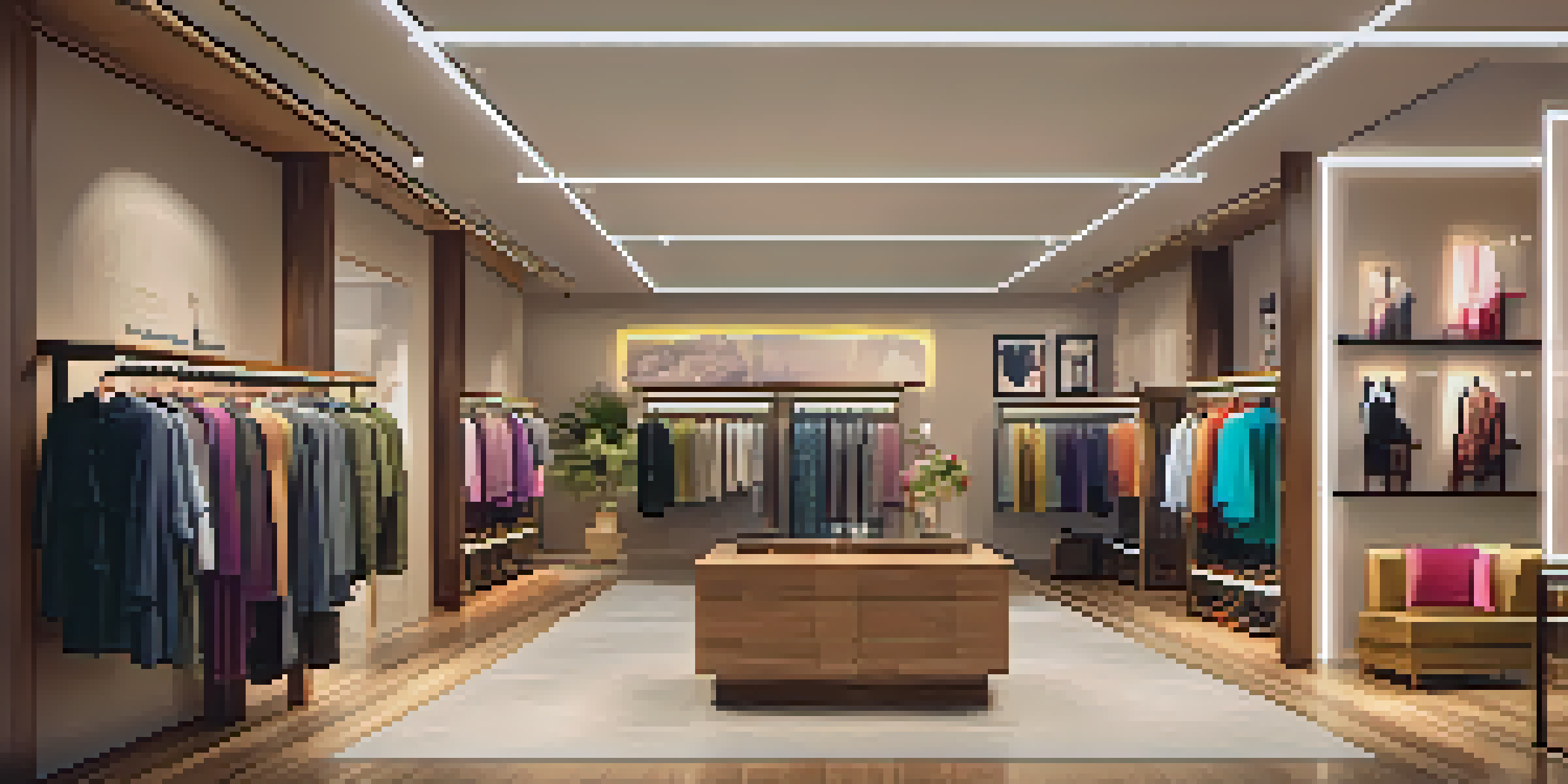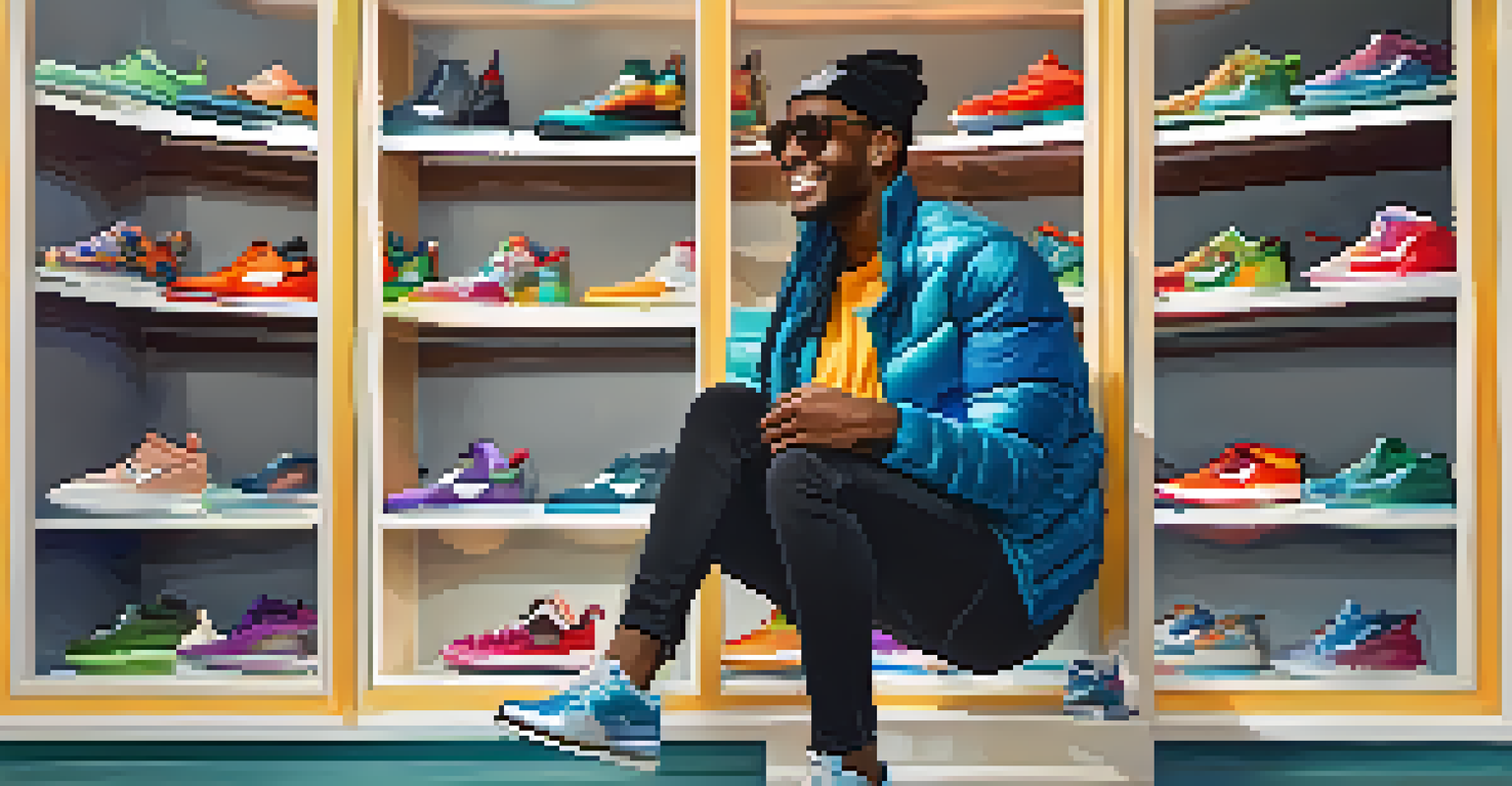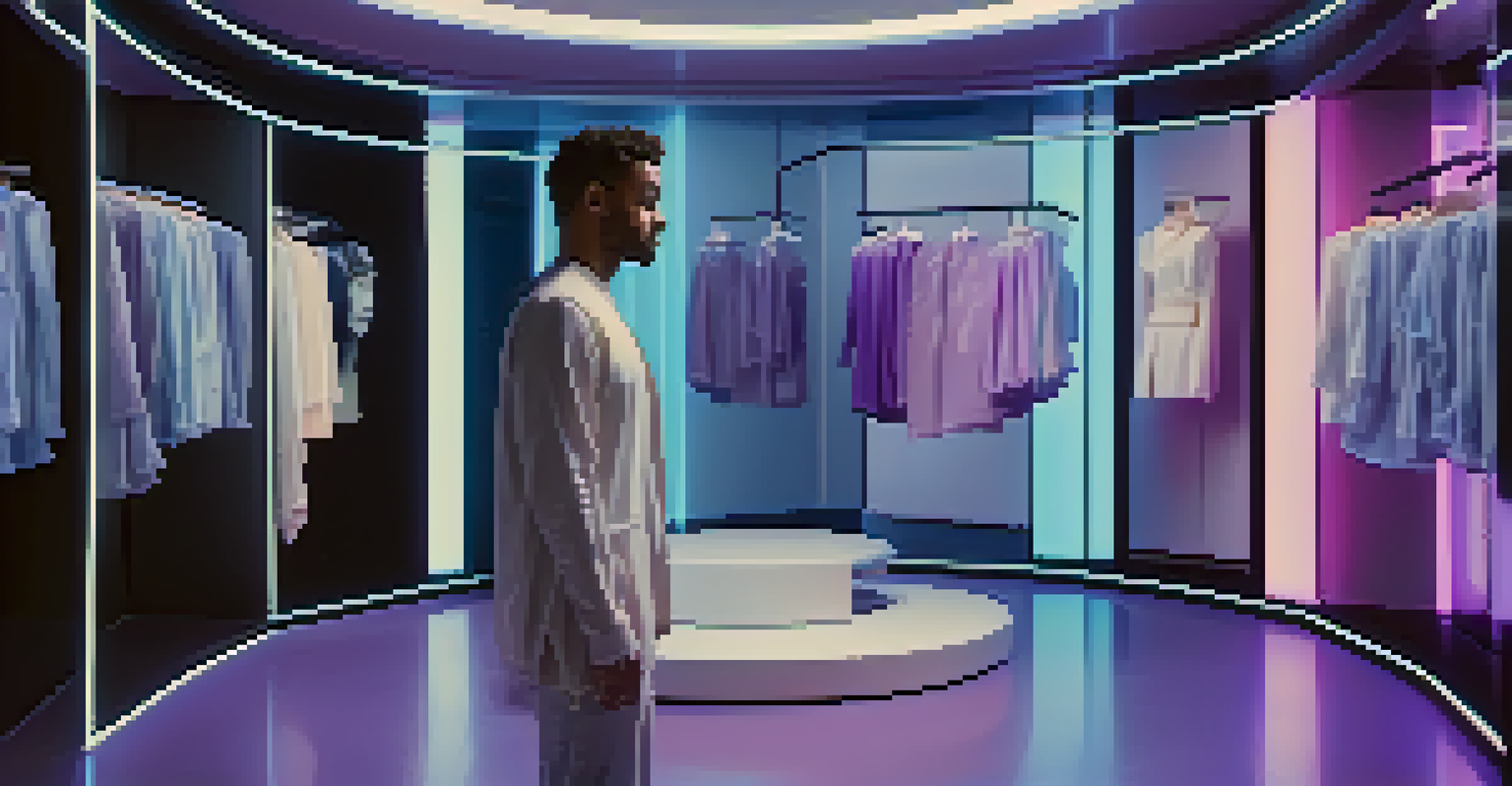Personalization in Fashion: The Future of Custom Shopping

Understanding Personalization in Fashion
Personalization in fashion refers to tailoring products and experiences to individual customers' preferences. This approach transforms the shopping experience from a one-size-fits-all model to one that prioritizes unique tastes and styles. As consumers increasingly seek items that reflect their personality, brands are adapting to meet these demands.
Fashion is the armor to survive the reality of everyday life.
Imagine walking into a store where the clothes are curated just for you, based on your style history and preferences. This is the essence of personalization—making each shopper feel special and understood. In a world saturated with choices, personalization helps brands stand out and create meaningful connections with their customers.
As technology advances, the ability to gather data about consumer preferences has become more sophisticated. Brands can analyze past purchases, social media activity, and even browsing habits to deliver a truly tailored shopping experience, ensuring customers find exactly what they want.
The Role of Technology in Custom Shopping
Technology is at the heart of the personalization revolution in fashion. Tools like artificial intelligence (AI) and machine learning are used to analyze vast amounts of customer data, predicting trends and preferences. This allows brands to offer personalized recommendations that feel intuitive and relevant.

For instance, online retailers can suggest items based on what you've viewed or purchased previously, almost like a virtual personal shopper. This not only enhances the shopping experience but also encourages repeat business by making it easier for customers to find styles they love.
Personalization Enhances Shopping
Tailoring products and experiences to individual preferences transforms the shopping experience and fosters meaningful connections between brands and consumers.
Moreover, augmented reality (AR) is stepping in to revolutionize the fitting process. Virtual fitting rooms let customers see how clothes will look on them without ever stepping into a store, adding another layer of customization to the shopping experience.
The Impact of Consumer Preferences on Fashion Trends
As consumers become more conscious of their fashion choices, their preferences significantly influence industry trends. The demand for personalized fashion reflects a broader societal shift towards individuality and self-expression. People want clothes that not only fit well but also tell their unique story.
Style is a way to say who you are without having to speak.
This change has led brands to experiment with limited editions, custom designs, and even collaborative collections. By engaging customers in the design process, brands can create pieces that resonate more deeply with their audience, fostering loyalty and community.
Essentially, personalization empowers consumers to take part in fashion, making them feel like co-creators rather than just buyers. This sense of ownership can enhance customer satisfaction and drive future purchases.
Sustainability and Personalization in Fashion
The intersection of personalization and sustainability is a critical topic in the fashion industry. As consumers grow more environmentally aware, they seek out brands that prioritize ethical practices. Personalization can actually support sustainability by reducing overproduction and waste.
When brands offer customized products, they can better align their inventory with actual consumer demand, minimizing unsold stock. This not only benefits the environment but also creates a more efficient business model for fashion companies.
Technology Drives Customization
Advanced tools like AI and augmented reality enable brands to analyze consumer data and provide personalized recommendations, enhancing customer satisfaction.
Additionally, personalized shopping experiences often involve higher-quality, longer-lasting items. When customers invest in pieces that are specifically tailored to them, they are less likely to discard them quickly, contributing to a more sustainable fashion ecosystem.
Challenges of Implementing Personalization
While the benefits of personalization are clear, implementing it is not without challenges. Brands must navigate issues related to data privacy and security, as customers are increasingly concerned about how their information is used. Striking a balance between personalization and privacy is essential for building trust.
Moreover, the cost of technology and data analytics can be prohibitive for smaller brands. While larger companies may have the resources to invest in sophisticated systems, smaller players may struggle to keep up, potentially widening the gap between industry giants and boutique brands.
Finally, brands must also ensure that their personalization strategies do not alienate customers who prefer a traditional shopping experience. Offering options for both personalized and standard shopping experiences can help cater to a broader audience.
Real-World Examples of Personalized Fashion
Several brands are leading the way in personalized fashion, demonstrating innovative approaches to custom shopping. For instance, Nike's 'Nike By You' program allows customers to design their shoes, choosing colors, materials, and even adding personal messages. This level of engagement not only boosts sales but also fosters a deeper connection with the brand.
Similarly, Stitch Fix employs data-driven algorithms to curate a personalized box of clothing for each customer based on their style preferences and feedback. This service has gained popularity by combining convenience with a tailored touch, making shopping feel effortless and customized.
Sustainability Meets Personalization
Customized fashion not only aligns with consumer demand but also supports sustainability by reducing waste and promoting longer-lasting items.
These examples highlight how personalization can drive brand loyalty and enhance the overall shopping experience, proving that understanding customers' needs is key to success in the fashion industry.
The Future of Personalization in Fashion
Looking ahead, the future of personalization in fashion seems bright and full of potential. As technology continues to evolve, we can expect even more innovative solutions that enhance the shopping experience. Features like advanced AI, virtual reality, and even blockchain for transparency are likely to become commonplace.
The fashion industry will also need to stay adaptable, as consumer preferences and trends are constantly shifting. Brands that prioritize flexibility and responsiveness to customer feedback will thrive in this dynamic landscape.

Ultimately, the future of fashion lies in creating meaningful, personalized experiences that resonate with consumers—transforming the act of shopping into a journey of self-discovery and expression.